| 🔍 > Lean Terms Directory |
Change Management
Change management is a fairly large field of study that deals with effectively and efficiently introducing changes into an organization. When changes occur, there are some predictable sequences of events that follow. Understanding this process will help smooth transitions that are associated with continuous improvement.
Change has two main components. The first is the individual component. People have their own behavior, values, attitudes, and preferences. Most people have formed these over time and can be reluctant or resistant to change them.
Secondly, there is organizational change. It relates to the collective character of a company, or its corporate culture. Organizations become an entity of their own, and over time, the people within it begin to act with their own set of norms. Change management requires understanding how both an individual and an organization can transform. Obviously, change is much less complicated when the goals of both are in alignment.
Watch our Change Management Video

When change is proposed or required, people will often initially go into denial. It may be about whether the change is necessary, whether it will really happen, or if it will personally affect them. Soon after, they will frequently get resistant or even angry—they may not believe the change is warranted, or they may not believe it is actually an improvement.
After people move past their resistance, they tend to begin exploring the potential of a change. They will eventually move to acceptance, and possibly even become an advocate. Most people move through this process at their own pace. Some leap ahead, skipping steps. Others stay put for extended periods, and some bounce around, but the basic steps are similar.
Another change management model used for individual transformation is the ADKAR model, published by Prosci in 1998.
- Awareness: Create awareness of the change.
- Desire: Develop a desire in the individual to support the change.
- Knowledge: Create an understanding of what the team needs to do to change.
- Ability: Turn the knowledge into the ability to support the change.
- Reinforce: Follow up to make the changes permanent.
Understanding and managing changes that will inevitably occur in an organization is a monumental task. In fact, this is a frequent failing of leaders when practicing continuous improvement. In many cases, the failure occurs before the project even starts. Leaders don’t communicate the need for change to their teams, or they fail to convince them that the change is necessary.
Change management becomes even more challenging when there are contradictory messages. Consider how receptive a team member would be to a change if immediately after hearing an announcement about record profits, a hiring freeze and cost cutting program were initiated. Regardless of the causality—the continued focus on cost cutting is what enables the company to continue posting record profits—when people are not convinced of the need, it is hard to get them on board.
There is also a natural resistance to change in people. They find comfort in consistency. That is one of the reasons that fast food chains are so popular. People love to have the comfort of knowing what the menu will be, how the place will look, and what the food will taste like. I find that at some of the restaurants that I like, I always look at the menu, and still order one of just a few items. Drivers will take the same route to work every day. People will keep the same hairstyle for years. They take comfort in continuity. On occasion, though, people do have to make a change. When they make the decision to change on their own, it is hard enough. When they are told they have to change, it can be nearly impossible. That aspect makes change management at work particularly hard. In most cases, changes are directed, rather than chosen.
One of the strongest drives in people is to establish security and safety (see Maslow’s hierarchy of needs), and many people get security from knowing exactly what their job is. Externally initiated change challenges that security. People may feel as though they will not be as effective when the change is implemented. They may feel protective of the comfort they have developed in their job, and feel that change is threatening that. The may feel more at risk when changes occur. They may not believe they will like the change. They may simply feel as though the change will be harder. They may even feel insecure about their ability to perform in the new environment. There may be a host of other reasons as well. Regardless of the basis of the resistance, change management requires that leaders understand that pushing back against change is more than just an uneasy feeling that people have. It is rooted in fear that basic needs will no longer be met.
Change management, then, is the art of learning to identify resistance in people, and applying an understanding of human nature to recognize the reasons why people are resisting change. In effect, it is simply the application of root cause analysis to people’s inertia.
Once the root cause is identified, creativity is king in change management. Leaders must come up with a plan to speed the transition with minimal hiccups.
Factors That Affect Change
As mentioned in the overview section, there are two components, organizational and individual, that are part of most changes. Each of those contributes a set of factors that affect the outcome of a change. In addition, the nature of the project itself adds to the mix.
These factors must be considered when planning on how to manage a significant change.
![]()

Change Management Warnings:
- Resistance to change is more than just a bad feeling. There are deep psychological effects from being forced to change.
- Poor change management can seriously hinder project success.
- Change is constant. Individuals who don’t learn to manage it for themselves will struggle.

Change management sounds like a leadership function, but you also share a responsibility for it. Modern business is dynamic, and companies that don’t adapt, and adapt quickly, get left behind. More than ever, effectively managing change for yourself is a critical job skill.
There are a few actions you can take to help smooth out the process. First of all, make it a habit to listen actively during meetings. It is easy to go into zombie reception mode, where you aren’t really listening to what is being said. Instead, take a notepad, and jot down a few key points. You can throw the note away after the meeting, but the act of writing makes you stay engaged. You’ll be far more likely to hear the rumblings of coming change if you are paying attention.
Second, participate in the communication process. Ask questions to confirm that you heard things correctly. If you have a concern, bring it up with your boss, but propose a solution. You’ll stand out. Many people will be complaining about changes. If you offer solutions that make the boss think, your needs will be more likely to be addressed.
Finally, practice. Next time you do something routine, change things up. Take a different route to work. Go to a new restaurant instead of one you frequent regularly and try a new type of food. Wear something different from your usual style. But when you do, look for…
Extended Content for this Section is available at academy.Velaction.com

Managing change well obviously impacts how a person feels about his or her job. But it has a much bigger impact than just that. The effectiveness of a change management plan plays a major role in the success of a project.
The grades shown in this chart don’t come from just slapping a few tasks together. They are the result of creating a plan that fully integrates change management within it.
This includes an abundance of communication before, during, and after the project. It also requires that leaders know their teams and understand the factors that affect job satisfaction within the organization. When a project impacts those factors without a specific plan to address them, the chance of dissatisfaction rises dramatically.
A big part of leading change is recognizing and reacting to the behavior of team members. That can be difficult, as not all people react openly.
Think of the response to change as a matrix. On one axis is acceptance. A person may range from fully resisting to fully supporting a change.
But they are not always open about how they feel, and they don’t always take action. A person may also range from passive to active.
Obviously, the goal is to turn people into active supporters. This is primarily done by clearly stating the desired behaviors, and then coaching and rewarding team members over and over and over until they start to migrate to active support.
Of note, the most dangerous position on the matrix is not, as many people think, the…
Extended Content for this Section is available at academy.Velaction.com

Key Points to Change Management:
- Project success and change management are closely linked.
- Team members have a responsibility to prepare themselves for change. In the modern business environment, jobs are not static.
- Being great at change management is extremely hard, and few accomplish it. But being good at it is attainable for most people and will still yield solid results.
![]()
Initial Steps to Change Management:
- Conduct change management training. Both leaders and team members will benefit from understanding what they will likely experience during the next big transition.
- Leaders: Actively add change management to your next project plan. Include designated time for communication and assessments. Also do a job satisfaction evaluation to see which major factors a project will affect.
- Team Members: Go to your favorite restaurant and order something that you have never ordered before while wearing something that you would not normally wear. Pay attention to the feelings you go through as you make these changes. Look for those same feelings the next time you are asked to make a change at work.
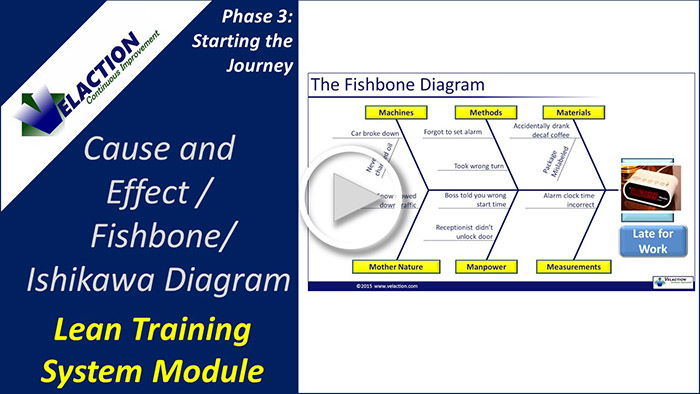
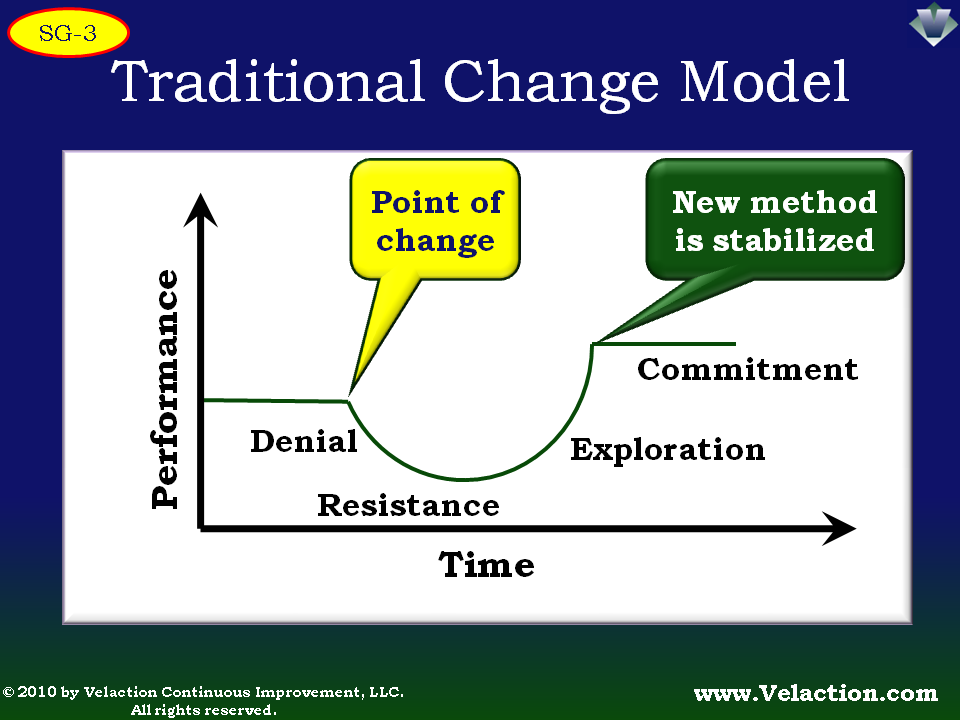
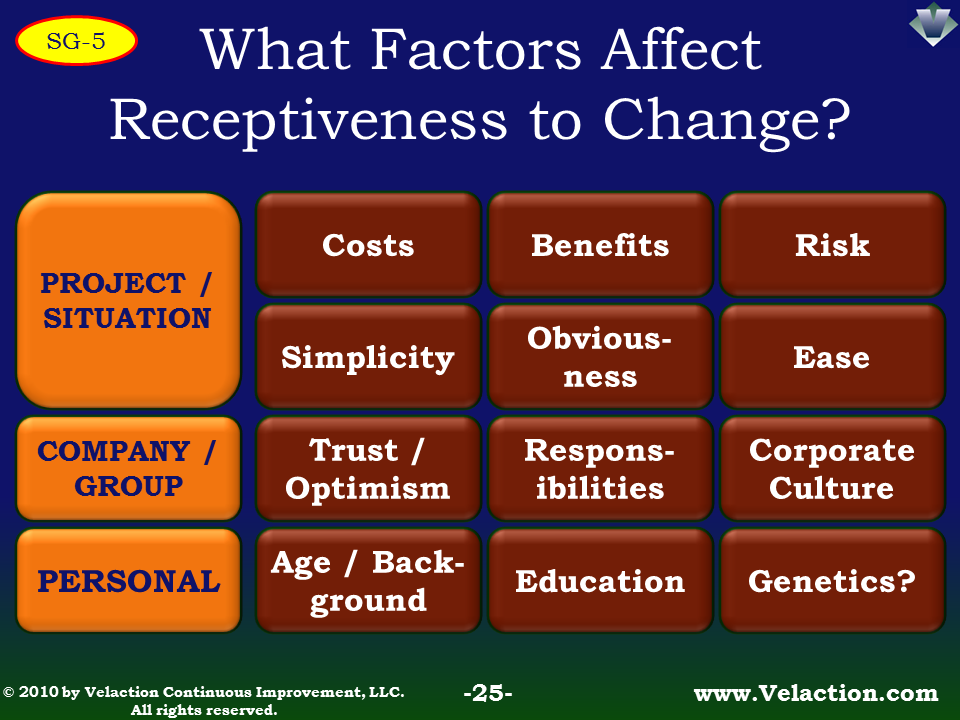
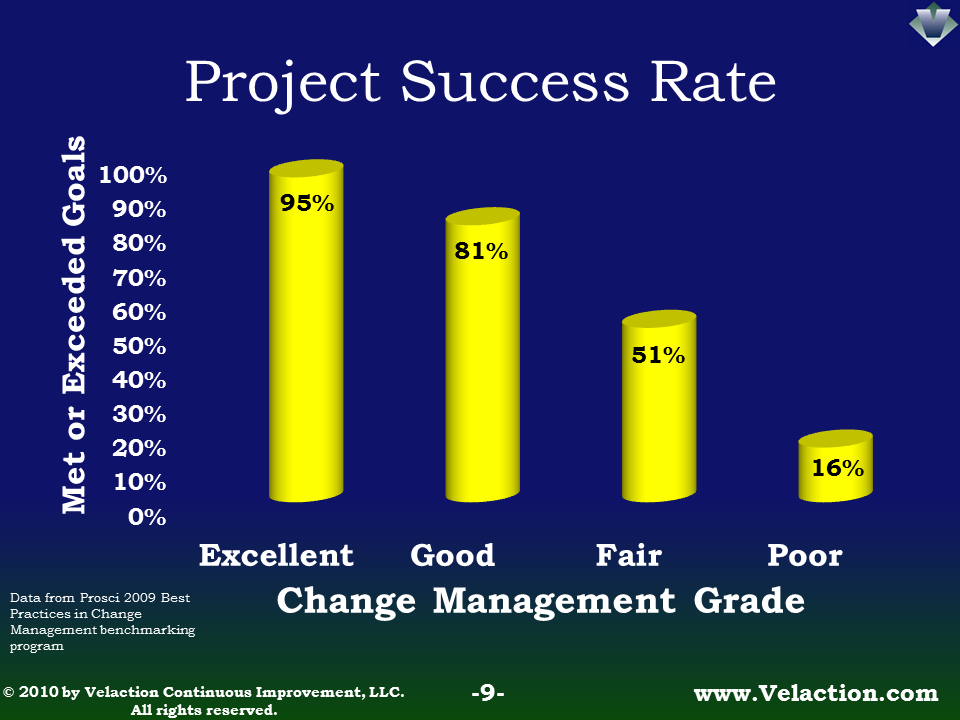
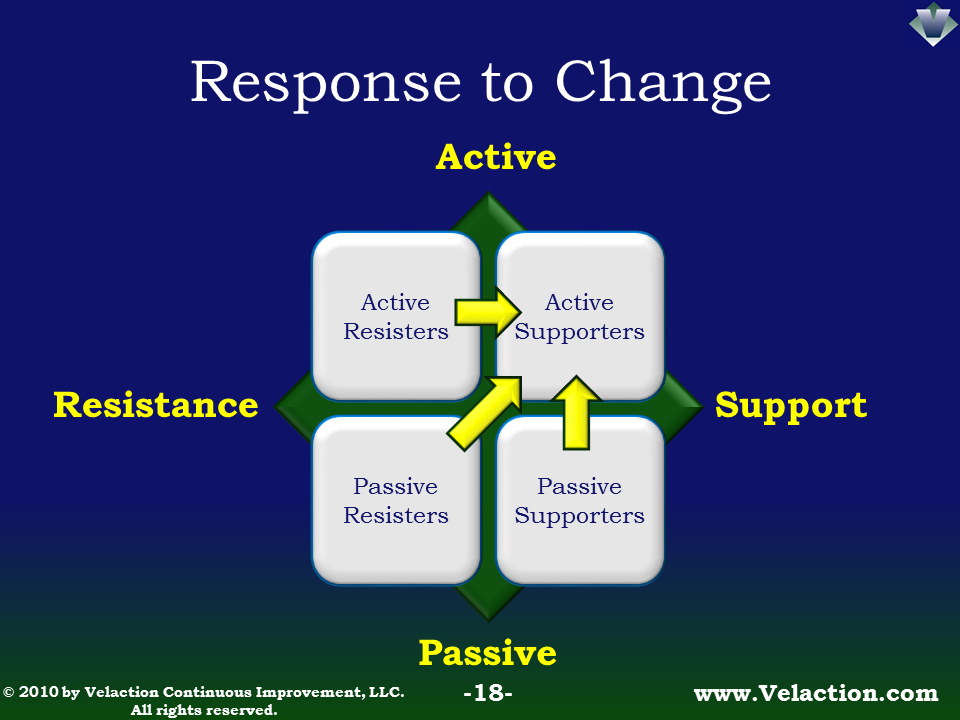
0 Comments